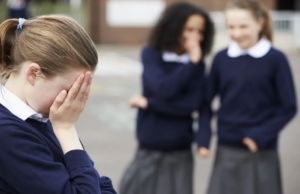Peer-to-Peer Sexual Abuse
Sexual behaviors among children and teenagers can span a wide range of interactions, from typical developmental activities to potentially harmful behaviors. Peer-to-peer sexual abuse occurs when children of similar ages engage in sexual activities that are considered inappropriate or harmful. Understanding the nature of these behaviors is crucial for recognizing when intervention is needed.

At times, sexual behaviors between peers might be developmentally appropriate, reflecting typical explorations of sexuality as they grow. However, there are situations where such behaviors can be harmful, particularly when there is coercion, aggression, or significant power imbalances. For example, if one child uses manipulation or force to engage another child in sexual activities, this crosses into harmful behavior.
The challenge in identifying harmful sexual behavior lies in distinguishing it from developmentally normal interactions. It is important for adults to engage in open, honest conversations with children about sexual behavior, helping them understand what is considered appropriate and setting clear boundaries. These discussions should be part of ongoing education about consent, respect, and personal boundaries.
When assessing whether sexual behaviors are harmful, look for specific signs:
- Power Imbalances: Significant differences in age, developmental stage, or cognitive abilities between the children involved can indicate a power imbalance that might make the behavior abusive. For instance, an older child or one with a developmental advantage using their position to coerce a younger or less capable peer is a red flag.
- Consent Issues: A lack of informed consent is a critical factor. All parties involved in sexual behavior must understand and agree to what is happening. If a child is pressured or coerced into sexual activities, this indicates abuse.
- Coercion and Aggression: Any form of coercion, such as threats or manipulation, and physical aggression are indicators of harmful behavior. These behaviors can create an environment where one child feels compelled to participate against their will.
- Utilizing frameworks like the Harmful Sexual Behavior Continuum can assist in differentiating between typical developmental behaviors and those that are harmful. If there are concerns about possible abuse, seeking guidance from professionals is essential to ensure the well-being of the children involved and to address any harmful behaviors appropriately.
Sibling Sexual Abuse
Sibling sexual abuse is a particularly troubling issue that often occurs within families and can be more frequent than other forms of intra-familial abuse. This form of abuse involves sexual activities between siblings and can be more prevalent and intrusive than abuse by other family members.

Research indicates that sibling sexual abuse occurs with significant frequency, and its impacts are profound. Victims of sibling sexual abuse often face severe emotional and psychological consequences. These can include long-term effects such as depression, anxiety, and difficulties in forming and maintaining healthy relationships. The trauma experienced can extend into adulthood, affecting various aspects of the individual’s life, including self-esteem and interpersonal trust.
One of the major challenges in addressing sibling sexual abuse is the difficulty victims may face when disclosing their experiences. Factors such as fear of disrupting family dynamics, feelings of guilt or shame, and a belief that the abuse is normal can hinder disclosure. These challenges often result in underreporting and delayed reporting, making it harder to provide timely and effective support.
Understanding the nature of sibling sexual abuse requires sensitivity and a comprehensive approach. It is crucial to recognize that the effects of sibling sexual abuse can be as damaging as abuse by other family members. Victims might not always have the support or resources to deal with their trauma effectively, making it important for professionals to approach each case with care and empathy.
Not all children who engage in harmful behaviors have themselves been victims of abuse. However, their actions should be assessed within the broader context of trauma and victimization. By acknowledging the complex dynamics and providing appropriate support, it is possible to address the issues related to sibling sexual abuse more effectively and offer victims the help they need.
